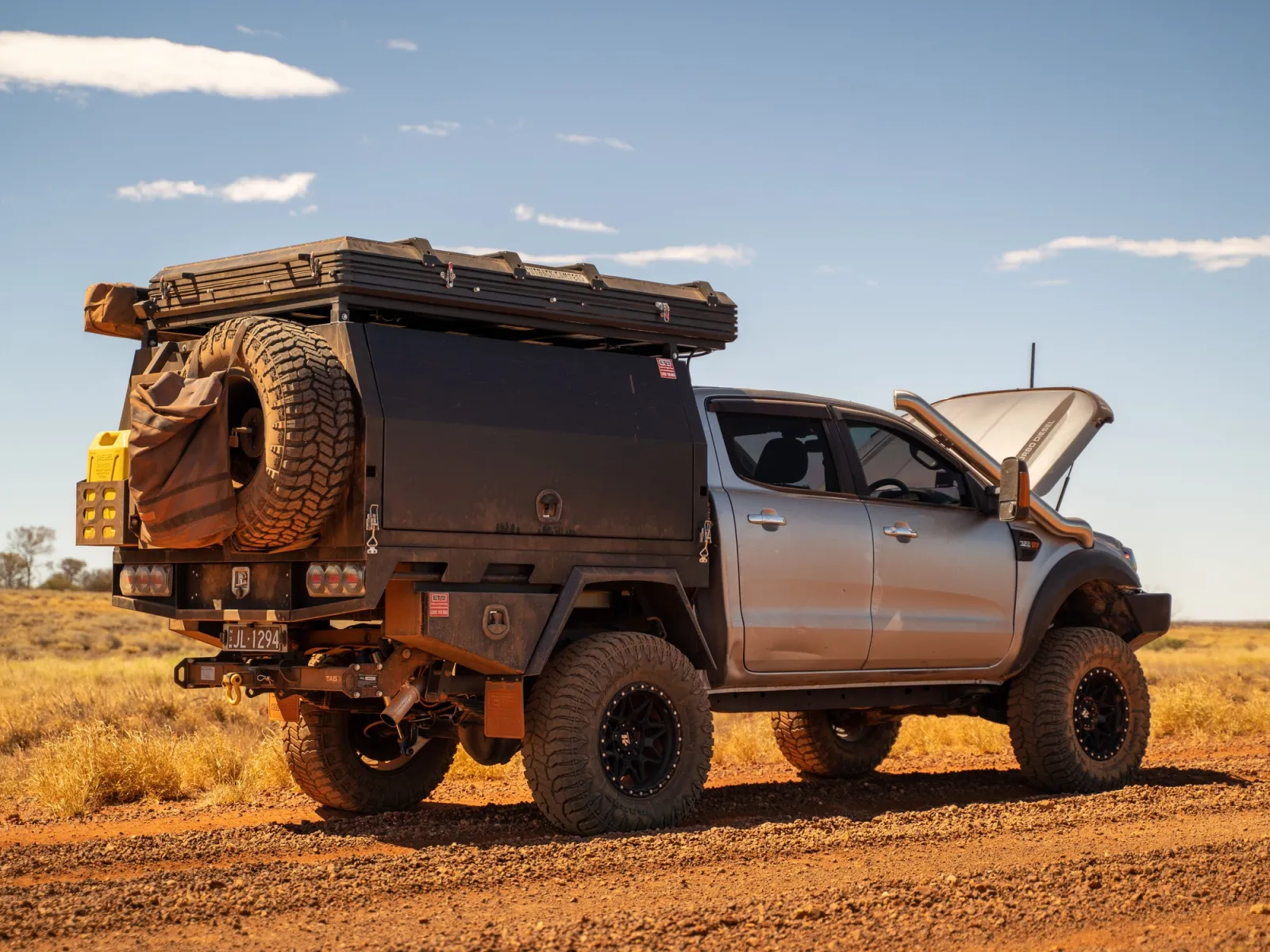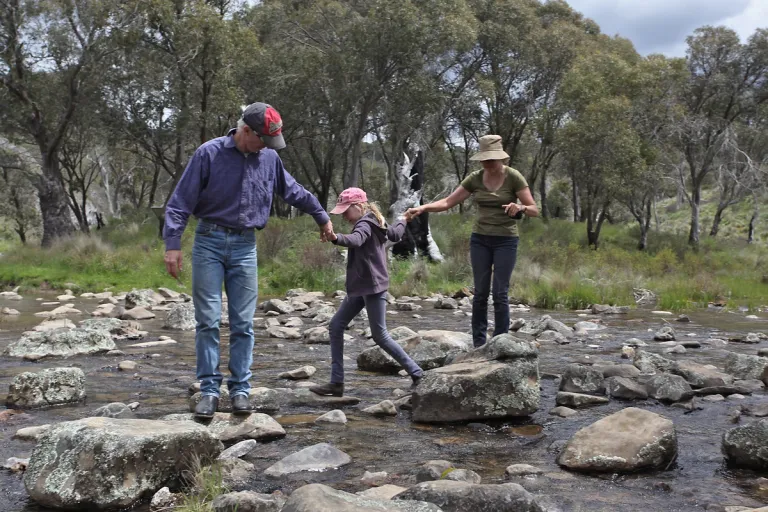Tackling any long drive in Australia demands preparation. When you’re out touring, towing, or tackling tough tracks, the last thing you want is your adventure cut short by a preventable breakdown. Enter the humble but essential daily vehicle check.
This quick, no-nonsense routine is your best defense against costly repairs, risky situations, and those dreaded trackside dramas. In this guide, we’ll show you what to check, how to do it, and why these simple steps can make all the difference.
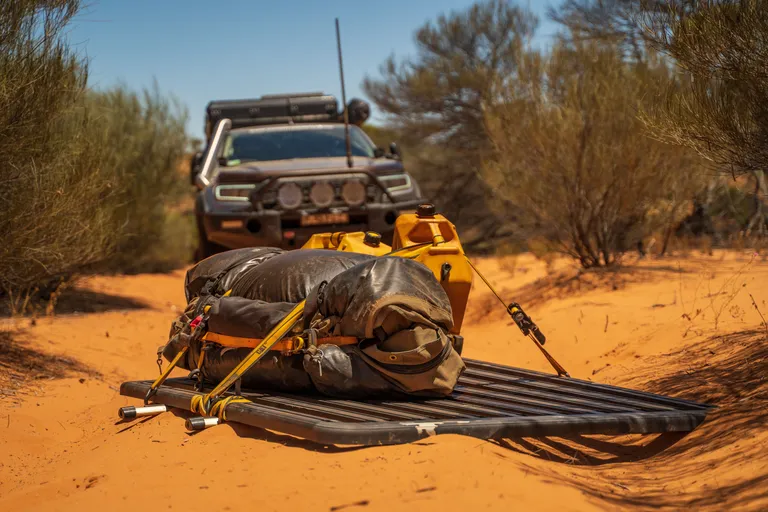
roof rack left behind in the middle of the track
Why Bother With Daily Checks?
I’ll go ahead and assume you’ve heard the phrase, “If it ain’t broke, don’t fix it.” While this may certainly hold true in some situations, it’s a dangerous mindset for touring. A daily inspection isn’t about finding problems—it’s about preventing them. The other day, after driving through one of Australia’s hottest locations, Marble Bar, I was doing my checks and found the clamp on one of the radiator hoses had failed. The hose was dangerously close to coming off completely, which would’ve left the engine without coolant - a potential death sentence for the motor.
It’s not just the situation above though, I’ve had my bacon saved countless times by ensuring I’ve checked over my 4X4 before hitting the road. It’s especially important when you’re completing long, or tough drives day after day, much like you would on a road trip or big lap.
What to Look for: A Step-by-Step Guide
1. Tyres:
Tyre’s are bloody important, we all know that. Firstly, they’re the only things keeping you, your family and your rig connected to the road, secondly, they’re essential to going absolutely anywhere in your vehicle, so it’s worth giving them a once-over:
- Pressure: Check and adjust according to the terrain. A loss of a few PSI overnight may not be visually noticeable, but it’ll make a difference to handling, tyre wear, safety and potential failure.
- Tread and Sidewalls: Look for cuts, cracks, or bulges. Pay particular attention to the sidewalls as damage here can result in premature and dangerous tyre failure.
- Nuts and Bolts: Wheel nuts should be tight. Carry a torque wrench to ensure they’re correctly tensioned. (Now, I’m not saying you need to torque your wheel nuts every single day, but you should be re-torquing them every so often and visually checking them daily).
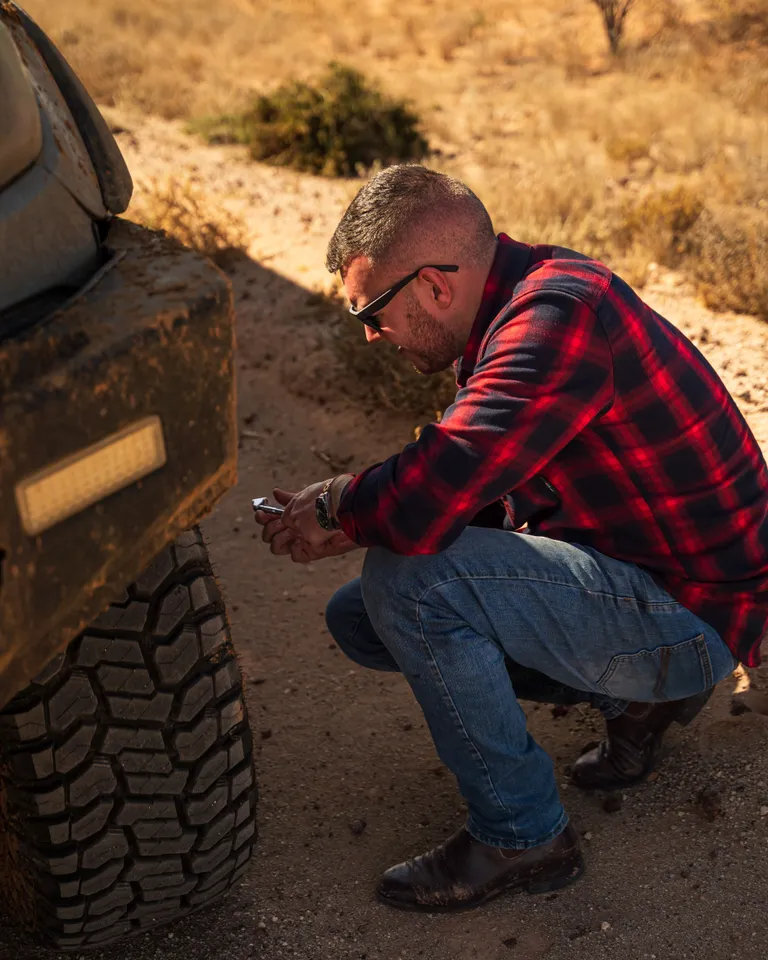
check your tyre pressures daily when travelling off road
2. Fluids and under bonnet checks:
Your 4X4’s fluids endure hell in the Australian heat. Pop the bonnet and check:
- Engine Oil: Ensure it’s within the recommended range.
- Coolant: Vital for avoiding an overheating disaster. Top up if needed, and make sure you’re using the right colour/type!
- Brake Fluid: Crucial for safe stops, especially when towing.
- Power Steering and Transmission Fluids: Don’t neglect these, transmission fluid checks are especially important if you’re towing. .
- Air Filter: The air filter should be free from debris, clean and allow unrestricted airflow to the motor. Resist the urge to remove the filter and bang it on your bullbar, this only knocks the dust closer to the element.
- Radiator Hoses: Squeeze the radiator hoses. If they feel crunchy or show signs of damage etc, consider replacing them, if you’ve done your homework and packed properly you’ll already have a spare hose on hand.
- Batteries: Avoid potential electrical fires and gremlins by checking your battery terminals are tight and there’s no loose connections.
- Belts: Check your vehicle's accessory belts are in good condition, at the correct tension and free from cracks and damage.
Pro tip: Keep a funnel and spare fluids in your kit.
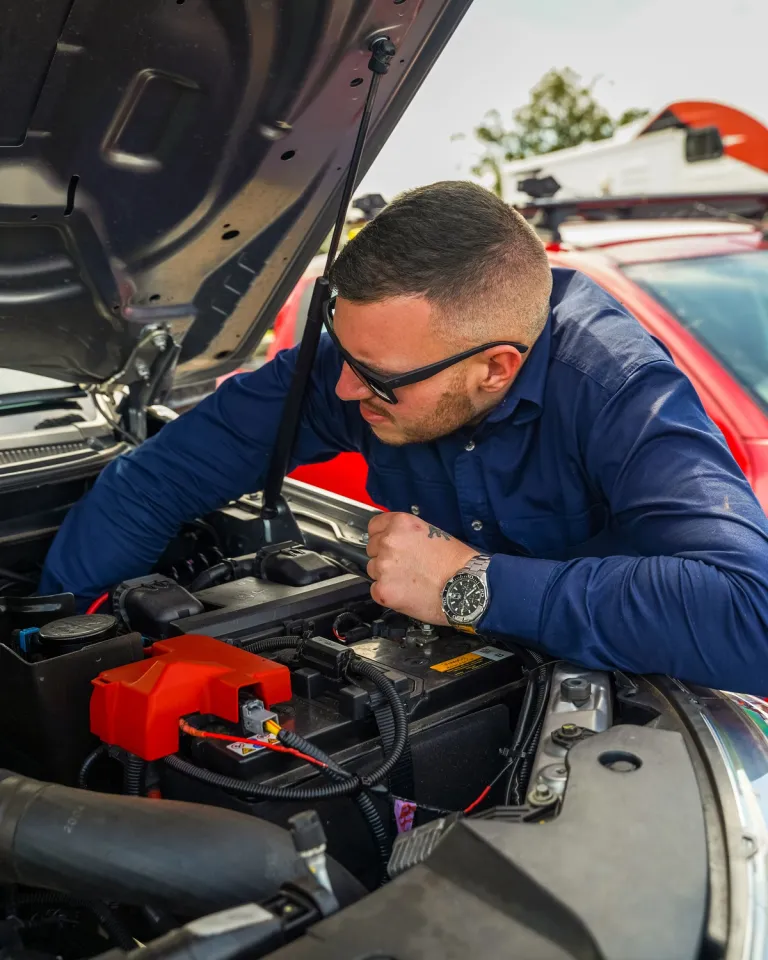
check fluids and levels under the bonnet daily when touring
3. Suspension and Underbody
Your 4X4’s suspension works overtime on corrugated roads and gnarly tracks. Take a look at the underside with a torch and:
- Look for leaks in shocks or struts.
- Check for loose bolts, bent brackets, or cracked components.
- Pay attention to bushes and mounts—they take a beating.
4. Brakes
Feel your brakes during your morning drive. If they’re spongy, noisy, or pulling to one side, address the issue immediately. For caravans, check the electric brake controller and ensure the braking system is synced.
6. Visual Checks
Visual checks are simple and important. Walk around your vehicle, paying particular attention to the undercarriage of the vehicle and checking for leaks, wet patches and loose components. A pro tip when checking for damage is to use dust and debris to your advantage, look for spots where dust may have filled in and outlined a crack, or a clean patch that was once covered by a nut, washer or other component.
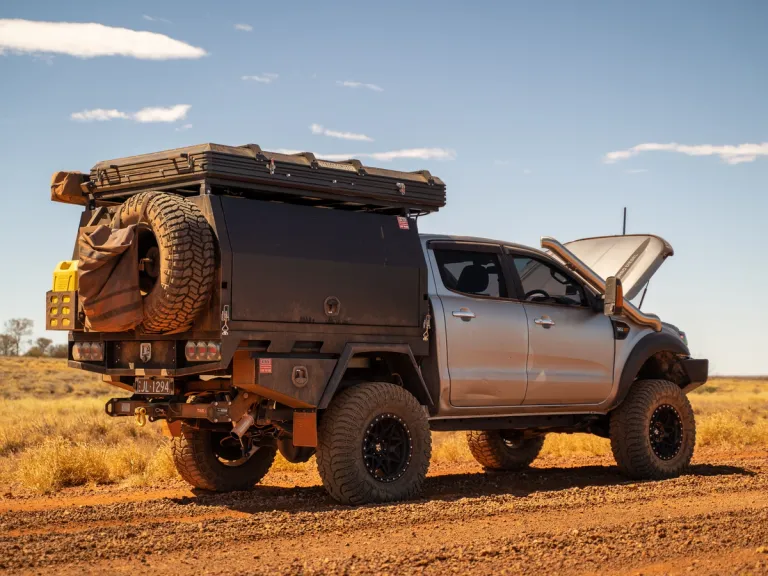
inspect your vehicle daily, including the underbody
Common Touring Hazards and How to Prevent Them:
1. Dust Ingress
Dust isn’t just annoying; it clogs filters and infiltrates electrical components, gets absolutely everywhere and likely isn’t great to ingest. Change engine and cabin air filters regularly, keep your A/C on recirculate and keep the windows up.
2. Overloading
It’s tempting to bring everything but the kitchen sink, however, an overloaded rig is a recipe for disaster. Distribute weight evenly and stick to your vehicle’s Gross Vehicle Mass (GVM) and Gross Combined Mass (GCM) limits.
3. Heat Management
Australian summers are brutal. Keep your engine cool by ensuring the radiator is clean and your coolant is topped up. Install a bonnet scoop or additional fans if overheating is a persistent issue. If you are driving and notice your engine coolant temperature increasing due to ambient temperatures, towing or other factors consider slowing down and dropping a gear. If you’re towing, consider fitting an external transmission cooler.
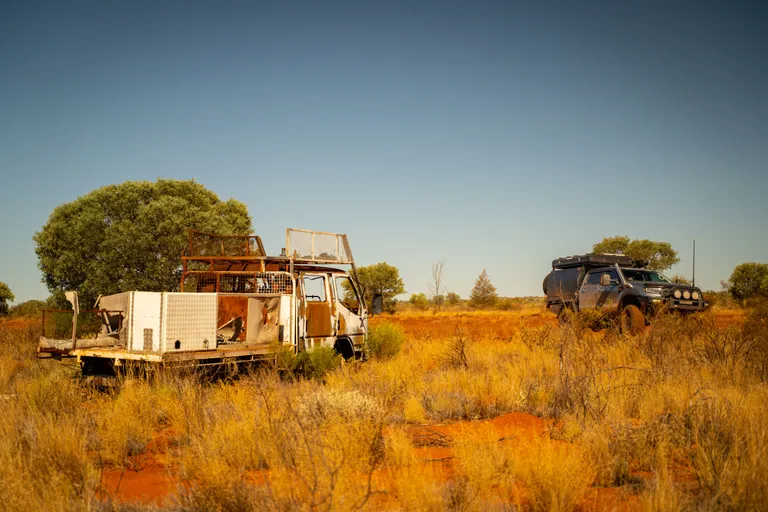
rusted out truck abandoned on the side of the road
Tips for Smooth Touring
- Get an OBD2 Scanner: To help you keep an eye on critical temperatures and pressures. I personally run and rate the Scan Gauge III.
- Park Smart: Wherever possible, park on level ground and in the shade. It makes pre-departure checks easier and keeps your vehicle cooler.
- Mark with Tape: After tightening bolts or adjusting components, use a paint marker or tape to track what’s been done. A quick visual check can confirm nothing’s moved.
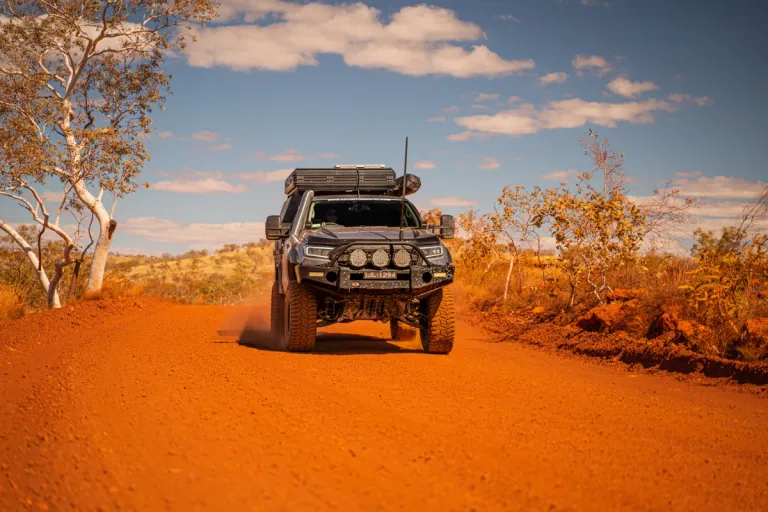
corrugated dirt road australian outback
Daily vehicle checks may feel tedious, but they’re the cornerstone of safe and successful touring and the more you do them the quicker they get, mine take no longer than five minutes. Treat your 4X4 like the lifeline it is. By dedicating a few minutes each morning to a thorough inspection, you’ll not only avoid unnecessary breakdowns but also gain the peace of mind to fully enjoy Australia’s breathtaking landscapes and gain some mechanical knowledge while you’re at it!
Getting ready for your next adventure?
Make sure you've got insurance that can go there too.


